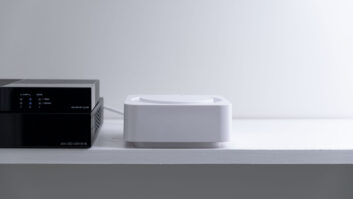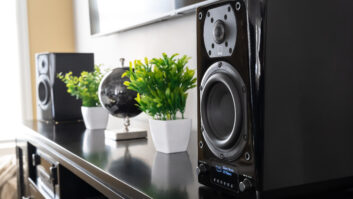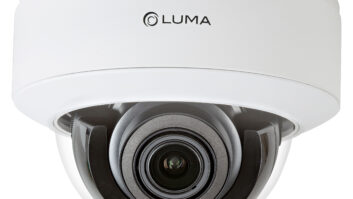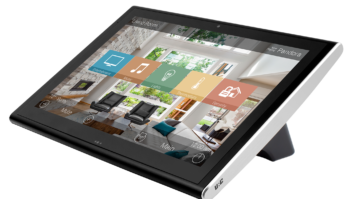“I believe I have something to say. Or rather, I have something to say that I believe in. My father once said, ‘Get the bad news over with first. You be the one to say the tough stuff.’ Well, here goes. There is a cruel wind blowing through our business. We all feel it, and if we don’t, perhaps we’ve forgotten how to feel. But here is the truth…”
—Jerry Maguire
I used to think that I would work as a custom installer until I was too old to crawl around in an attic or through a crawl space, but now I fear that the industry will tire of me before I tire of it.
I’ve been in this business as an installer, programmer, manager, partner, and writer for almost 13 years now, and the future that I see us headed for, quite frankly, scares me.
For years, this industry’s method for achieving year-over-year increased business and profitability was simply to sell more. And for a while there were so many new, must-have products coming along at such a rapid-fire clip that it was relatively easy to do. First came surround sound, which was demonstrably better, enabling us to sell five speakers and a sub instead of just two speakers. Then came HDTV, which was the perfect bridegroom to the better audio experience. Then came the flat panel, HDTV, and the realization of the dream of having a TV on the wall. Then, with 1080p, we achieved resolution that was superior to most commercial experiences. Simultaneously, the construction boom happened, and distributed audio, smart homes, and automation swept us up in a glorious tide of tons of work and easy money.
But, every year prices continued to steadily – sometimes drastically – drop while performance seemed to improve. This allowed us to add on those extra customers who previously couldn’t afford us. Sure we were making sales that were 75 percent of the previous year’s, but the volume was up. Then the sales were at 60 percent, then 50 percent…
My store sold its first 50-inch plasma for $20,000. Then it went to $15,000, then down to $10,000. Now with it around $1,000, even if I sell 20 of them, I’m not going to make close to the same money that I did on a single $20,000 model. Not to mention that the people buying the $1,000 50-inch panel have absolutely none of the enthusiasm for add-on system purchases that the $20,000 panel purchaser did. Same with audio; last year’s $1,000 receiver is now inferior to this year’s $700 receiver, which will be replaced by a better model next year for $499. (Thank God for the long life cycle of speakers! And while we’re at it, instead of demonizing Noel Lee at Monster, the entire industry should be praising him for creating an entire category – his company’s or others – that has allowed us to find some profitability in our sales.)
And although you could keep up the pace of adding new business for a while, eventually it becomes unsustainable. To do the same dollar business of 100 clients from five years ago would require probably 300-plus clients today. Unfortunately there aren’t 300-plus new clients, because A) The market is virtually saturated with flat-panel TVs and B) The recession has put a wallet-constricting gag reflex on spending, and C) The Internet has opened up a venue of shopping where mass e-tailers are willing to sell products for single-digit profit percentages.
So that’s today, but what about next year, five years from now, or, as prices continue to plummet in the unwinnable race-to-the-bottom while performance steadily improves? How frequently can you double the number of jobs that your company does?

Manufacturers counter with, “You need to educate your customer! Tell them about the better power supplies and new feature X! And Internet Radio! Or 3D! Are you mentioning any of that?!” And, yes, there are certainly still benefits to the better pieces, and still people out there willing to step up the purchasing ladder, but for many customers good enough is just that: good enough. And, honestly, the low-end of the market is so good now and provides an experience so far superior to what many people have ever experienced that stepping up doesn’t make a lot of sense for most. Would I trade in my separates rig for a $300 receiver? No way. But I’m a freak for this stuff. Thank goodness there are still enough other freaks out there that keep our industry going. But, would a modern-day $300 receiver be totally adequate to drive a $700 speaker package with a $129 Blu-ray player and next-gen high-res audio? Yes. And for many, there is just no need to stretch beyond the performance of entry-level gear.
Also, at some point along the way it became unprofitable to actually sell the TV. Over the past week I have looked to spec in TVs for clients and have seen on multiple occasions where the cost from my distributor – pre-shipping – is more than the advertised price at Best Buy. I literally could not sell the person a TV, even at cost, and be competitive. The joke for a while now has been, “Buy the TV wherever you want, just let me sell you the mount and the cables!” How sad. How soul-crushingly sad!
And while it is video that seems to be driving our industry lately – giving us the newest most customer-desired products – it is also video that is concurrently killing our industry. There used to be a grace period where new products had a window of time where they were “cutting edge” or “high-end” and still profitable. Now, every new product introduction is almost instantly reduced to a zero-profit, add-on item. Blu-ray could have really helped this industry for a time, but Blu-ray players almost immediately reached the point where they were sold for dollars over cost. This is great for end-users, manufacturers, and especially the movie studios that are riding the equipment manufacturer’s and our backs to flood the market with players that will give them an opportunity to resell their catalog titles at a 100-percent pricing premium. And now we have 3D, the latest product blitzkrieg. But barely one model-cycle in, 3D is already just another add-on feature included in mid-level, no-profit displays. Wait until next year when 3D is de facto in every set.
I’ve bemoaned the iPad for a while, and look, I get it, the iPad is one frickin’ super stud-hot controller. I LOVE the iPad. And it has been great for customers, but it has not been great for installers. Sure, you can sell more $500 black-box controllers, and that is great. And, hopefully there’s a ton of add-on lighting and HVAC and security control to go along with it, too. That’s the dream of the iPad, because it has taken away 100 percent of the controller sale and replaced it with $0. It has taken away 100 percent of the installation sale and replaced it with $0. And it has taken away 100 percent of the programming sale and replaced it with $0. And, let me tell you, selling, installing, and programming automation controllers was a huge chunk of business for this industry.
Apple TV just came out for $99, and Google TV will be out shortly. These are killer, do-it-yourself products that will be purchased at Best Buy, on the internet, at Target and Wal-Mart, and then installed by the customer with zero need for a trained professional, providing a terrific end-user experience. I think Sonos is amazing, as well, because it can easily fill an entire home with audio, controlled by a terrific interface, all requiring virtually no installation. We seem to be ever on the cusp of breaking through with wireless speaker systems, and they will sound great… and they’ll be cheap… and they’ll eliminate another need for the installer.
Of course there will always be the large cities with the pockets of uber-wealthy who don’t want to be bothered with price shopping and who just want to write a check and have it done for them. But in most places, where there are fewer and fewer of these whales, it is getting harder to survive on that “one big job.” And, even in the large cities I think we’ll see a compressing; where there would have been 10 shops, it might go down to five or less.
I have loved this business for years, but now I fear that it has a terminal illness. The question is, are we going to just sit back and watch it slowly die? Can we do something? Can we save the custom install business?







